Miðvikudagur, 9. janúar 2013
Nýtt frá NASA / NRC: Áhrif sólar á loftslag jarðar geta verið meiri og flóknari en áður var talið...
Í gær 8. jan. 2013 birtist á vefnum NASA Science News athyglisverð frétt. Innihaldið kemur þeim sem þessar línur ritar ekki mikið á óvart, en þeim mun ánægjulegra er að lesa fréttina og ekki síður skýrsluna sem hún vísar til. Í stuttu máli þá er vísað til skýrslu frá National Research Council (NRC) sem nefnist "The Effects of Solar Variability on Earth's Climate". NCR gerði sér grein fyrir að nauðsynlegt væri að smala saman fimm tugum sérfræðinga frá hinum ýmsu sérfræðisviðum svo sem plasmaeðlisfræði, sólvirkni, loftslagsefnafræði, straumfræði, eðlisfræði háorkuagna, loftslagssögu jarðar... Þetta væri það flókið mál að enginn einn sérfræðihópur eins og t.d. loftslagsfræðingar hefðu nægilega yfirgripsmikla þekkingu á málinu.
Oft er vitnað til þess að heildarútgeislun sólar breytist aðeins um 0,1% yfir 11-ára sólsveifluna, en það ætti ekki að hafa mikil bein áhrif á hitafarið. Það gleymist þó oft í umræðunni að aðrir þættir geta verið miklu áhrifameiri, en útfjólublái þáttur sólarljóssins breytist miklu miklu meira, en hann breytist um 1000% eða meir yfir sólsveifluna. Á það benti bloggarinn reyndar á fyrir 15 árum hér Svo má ekki gleyma öðrum þáttum svo sem agnastreymi frá sólinni, háorku rafeindum og geimgeislum sem fjallað er um í skýrslunni. Nú er það spurning hvort hratt minnkandi sólvirkni um þessar mundir eigi sinn þátt í að hitastig jarðar hefur staðið í stað undanfarin 16 ár samkvæmt HadCrut4 gögnum bresku veðurstofunnar MetOffice, en nú um jólin kom fram í nýrri spá frá þeirri sömu stofnun að þessi stöðnun verði a.m.k. til 2017, þ.e. í fulla tvo áratugi. Hvað þá tekur við mun tíminn leiða í ljós.
Auðvitað svaraði þessi sérfræðinganefnd ekki öllum spurningum sem brenna á vörum manna, en vonandi er þetta bara byrjunin á því að menn líti til himins eftir skýringum, það er nefnilega svo örstutt út í geiminn frá yfirborði jarðar...
Sjá frétt NASA Science News Solar Variability and Terrestrial Climate hér. Sjá drög að skýrslunni frá NCR “The Effects of Solar Variability on Earth’s Climate” hér.
|
Mynd úr skýrslunni
Klippt úr frétt NASA: - Many of the mechanisms proposed at the workshop had a Rube Goldberg-like quality. They relied on multi-step interactions between multiples layers of atmosphere and ocean, some relying on chemistry to get their work done, others leaning on thermodynamics or fluid physics. But just because something is complicated doesn't mean it's not real...
Verkefni nefndarinnar í stórum dráttum samkvæmt skýrslunni:
Nefndina skipuðu: Caspar Ammann, National Center for Atmospheric Research
|
Meginflokkur: Vísindi og fræði | Aukaflokkar: Bloggar, Stjórnmál og samfélag, Umhverfismál | Breytt s.d. kl. 20:35 | Facebook
Um bloggið
Ginnungagap
Ýmislegt
Loftslag
Teljari
Álverð
Sólin í dag:
(Smella á mynd)
.
Olíuverðið í dag:
Nýjustu færslur
- Kínverskur loftbelgur yfir Ameríku, og Amerískur belgur yfir ...
- Vísindavefurinn: Getum við seinkað klukkunni á Íslandi og fen...
- Sjálfstæðisflokkurinn með tæplega 19% meira fylgi en Samfylki...
- Bjarni Sigurðsson harmonikkusnillingur frá Geysi. Fáein orð...
- Hvers vegna valdi Apple ekki Ísland fyrir gagnaver...?
Heimsóknir
Flettingar
- Í dag (19.9.): 0
- Sl. sólarhring: 10
- Sl. viku: 62
- Frá upphafi: 0
Annað
- Innlit í dag: 0
- Innlit sl. viku: 43
- Gestir í dag: 0
- IP-tölur í dag: 0
Uppfært á 3 mín. fresti.
Skýringar
Tenglar
Tenglar
Ýmsar vefsíður
- Efnisyfirlit pistla
- Lofthiti - Sjávarstaða - Hafís - Sólvirkni... Beintengdir ferlar
- Club du Soleil Greinar um samaspil sólar og veðurfars
- Stjörnufræðivefurinn
- Astronomy Picture of the Day
- Climate4you
- Watts Up With That?
- World Climate Report
- CO2 Science
- The Reference Frame
- Climate-Audit
- ICECAP
- The Air Went
- Science Sceptical Blog
- Roy Spencer
- Friends of Sience
- Prometheus
- Öldur aldanna. Sjaldan er ein báran stök - einnig í veðurfari? (2003) Vefsíða ÁHB
- Gróðurhúsaáhrif eða eðlilegar sveiflur í virkni sólar? (Grein í Lesbók Mbl. 20. júní 1998) Höfundur Ágúst H. Bjarnason
- Er jörðin að hitna?-Ekki er allt sem sýnist (1998) Vefsíða ÁHB
Uppskriftir
Ýmsar mataruppskriftir
Myndaalbúm
Bloggvinir
-
 majab
majab
-
 ragu
ragu
-
 amadeus
amadeus
-
 andres08
andres08
-
 apalsson
apalsson
-
 asabjorg
asabjorg
-
 askja
askja
-
 astromix
astromix
-
 baldher
baldher
-
 biggibraga
biggibraga
-
 bjarkib
bjarkib
-
 bjarnijonsson
bjarnijonsson
-
 bjarnimax
bjarnimax
-
 bjorn-geir
bjorn-geir
-
 blindur
blindur
-
 bofs
bofs
-
 brandarar
brandarar
-
 daliaa
daliaa
-
 darwin
darwin
-
 duddi9
duddi9
-
 ea
ea
-
 egillsv
egillsv
-
 einari
einari
-
 einarstrand
einarstrand
-
 elinora
elinora
-
 elvira
elvira
-
 emilhannes
emilhannes
-
 esv
esv
-
 eyjapeyji
eyjapeyji
-
 fhg
fhg
-
 finder
finder
-
 finnur
finnur
-
 fjarki
fjarki
-
 flinston
flinston
-
 frisk
frisk
-
 gattin
gattin
-
 geiragustsson
geiragustsson
-
 gillimann
gillimann
-
 gretaro
gretaro
-
 gthg
gthg
-
 gudmbjo
gudmbjo
-
 gudni-is
gudni-is
-
 gummibraga
gummibraga
-
 gun
gun
-
 gutti
gutti
-
 haddi9001
haddi9001
-
 halldorjonsson
halldorjonsson
-
 halldors
halldors
-
 hlini
hlini
-
 hof
hof
-
 hordurhalldorsson
hordurhalldorsson
-
 hreinsamviska
hreinsamviska
-
 hronnsig
hronnsig
-
 hugdettan
hugdettan
-
 icekeiko
icekeiko
-
 ingibjorgelsa
ingibjorgelsa
-
 jakobbjornsson
jakobbjornsson
-
 jakobk
jakobk
-
 johannesthor
johannesthor
-
 johnnyboy99
johnnyboy99
-
 jonaa
jonaa
-
 jonasgunnar
jonasgunnar
-
 jonmagnusson
jonmagnusson
-
 jonpallv
jonpallv
-
 jonthorolafsson
jonthorolafsson
-
 juliusvalsson
juliusvalsson
-
 karljg
karljg
-
 katrinsnaeholm
katrinsnaeholm
-
 kikka
kikka
-
 kje
kje
-
 klarak
klarak
-
 kolbrunb
kolbrunb
-
 krissiblo
krissiblo
-
 ksh
ksh
-
 kt
kt
-
 lehamzdr
lehamzdr
-
 liljabolla
liljabolla
-
 lillagud
lillagud
-
 lindalea
lindalea
-
 lucas
lucas
-
 maeglika
maeglika
-
 maggij
maggij
-
 maggiraggi
maggiraggi
-
 marinomm
marinomm
-
 martasmarta
martasmarta
-
 marzibil
marzibil
-
 mberg
mberg
-
 midborg
midborg
-
 minos
minos
-
 morgunbladid
morgunbladid
-
 mosi
mosi
-
 mullis
mullis
-
 naflaskodun
naflaskodun
-
 nimbus
nimbus
-
 nosejob
nosejob
-
 omarbjarki
omarbjarki
-
 ormurormur
ormurormur
-
 palmig
palmig
-
 perlaoghvolparnir
perlaoghvolparnir
-
 peturmikli
peturmikli
-
 photo
photo
-
 possi
possi
-
 prakkarinn
prakkarinn
-
 raggibjarna
raggibjarna
-
 rattati
rattati
-
 ravenyonaz
ravenyonaz
-
 redlion
redlion
-
 rs1600
rs1600
-
 rynir
rynir
-
 saemi7
saemi7
-
 sesseljamaria
sesseljamaria
-
 sigfus
sigfus
-
 sigurgeirorri
sigurgeirorri
-
 sjalfstaedi
sjalfstaedi
-
 sjerasigvaldi
sjerasigvaldi
-
 skari60
skari60
-
 skulablogg
skulablogg
-
 sleggjudomarinn
sleggjudomarinn
-
 stebbix
stebbix
-
 steinibriem
steinibriem
-
 steinnhaf
steinnhaf
-
 stinajohanns
stinajohanns
-
 stjornuskodun
stjornuskodun
-
 storibjor
storibjor
-
 straitjacket
straitjacket
-
 summi
summi
-
 tannibowie
tannibowie
-
 thil
thil
-
 thjodarskutan
thjodarskutan
-
 throsturg
throsturg
-
 toro
toro
-
 tryggvigunnarhansen
tryggvigunnarhansen
-
 valdimarjohannesson
valdimarjohannesson
-
 valdinn
valdinn
-
 vefritid
vefritid
-
 vey
vey
-
 vidhorf
vidhorf
-
 vig
vig
-
 visindin
visindin
-
 vulkan
vulkan
-
 kristjan9
kristjan9
-
 arkimedes
arkimedes
-
 kliddi
kliddi
-
 eliasbe
eliasbe
Eldri færslur
- Febrúar 2023
- Janúar 2019
- Maí 2018
- Júlí 2017
- Maí 2017
- Febrúar 2017
- Janúar 2017
- Nóvember 2016
- Október 2016
- September 2016
- Júlí 2016
- Apríl 2016
- Mars 2016
- Febrúar 2016
- Janúar 2016
- Desember 2015
- Nóvember 2015
- Október 2015
- Ágúst 2015
- Júní 2015
- Maí 2015
- Apríl 2015
- Mars 2015
- Febrúar 2015
- Janúar 2015
- Desember 2014
- Nóvember 2014
- Október 2014
- September 2014
- Ágúst 2014
- Júlí 2014
- Júní 2014
- Maí 2014
- Apríl 2014
- Mars 2014
- Febrúar 2014
- Janúar 2014
- Desember 2013
- Nóvember 2013
- Október 2013
- September 2013
- Ágúst 2013
- Júlí 2013
- Júní 2013
- Maí 2013
- Apríl 2013
- Mars 2013
- Febrúar 2013
- Janúar 2013
- Desember 2012
- Nóvember 2012
- September 2012
- Ágúst 2012
- Júlí 2012
- Júní 2012
- Maí 2012
- Apríl 2012
- Mars 2012
- Febrúar 2012
- Janúar 2012
- Desember 2011
- Nóvember 2011
- Október 2011
- September 2011
- Ágúst 2011
- Júlí 2011
- Júní 2011
- Apríl 2011
- Mars 2011
- Febrúar 2011
- Janúar 2011
- Desember 2010
- Nóvember 2010
- Október 2010
- September 2010
- Ágúst 2010
- Júlí 2010
- Júní 2010
- Maí 2010
- Apríl 2010
- Mars 2010
- Febrúar 2010
- Janúar 2010
- Desember 2009
- Nóvember 2009
- Október 2009
- September 2009
- Ágúst 2009
- Júlí 2009
- Júní 2009
- Maí 2009
- Apríl 2009
- Mars 2009
- Febrúar 2009
- Janúar 2009
- Desember 2008
- Nóvember 2008
- Október 2008
- September 2008
- Ágúst 2008
- Júlí 2008
- Júní 2008
- Maí 2008
- Apríl 2008
- Mars 2008
- Febrúar 2008
- Janúar 2008
- Desember 2007
- Nóvember 2007
- Október 2007
- September 2007
- Ágúst 2007
- Júlí 2007
- Júní 2007
- Apríl 2007
- Mars 2007
- Febrúar 2007
- Janúar 2007
- Desember 2006
- Nóvember 2006
- Október 2006
- September 2006
Færsluflokkar
- Bloggar
- Bækur
- Dægurmál
- Evrópumál
- Ferðalög
- Fjármál
- Fjölmiðlar
- Heilbrigðismál
- Heimspeki
- Íþróttir
- Kjaramál
- Kvikmyndir
- Lífstíll
- Ljóð
- Löggæsla
- Mannréttindi
- Matur og drykkur
- Menning og listir
- Menntun og skóli
- Samgöngur
- Sjónvarp
- Spaugilegt
- Spil og leikir
- Stjórnmál og samfélag
- Sveitarstjórnarkosningar
- Tónlist
- Trúmál
- Trúmál og siðferði
- Tölvur og tækni
- Umhverfismál
- Utanríkismál/alþjóðamál
- Vefurinn
- Viðskipti og fjármál
- Vinir og fjölskylda
- Vísindi og fræði
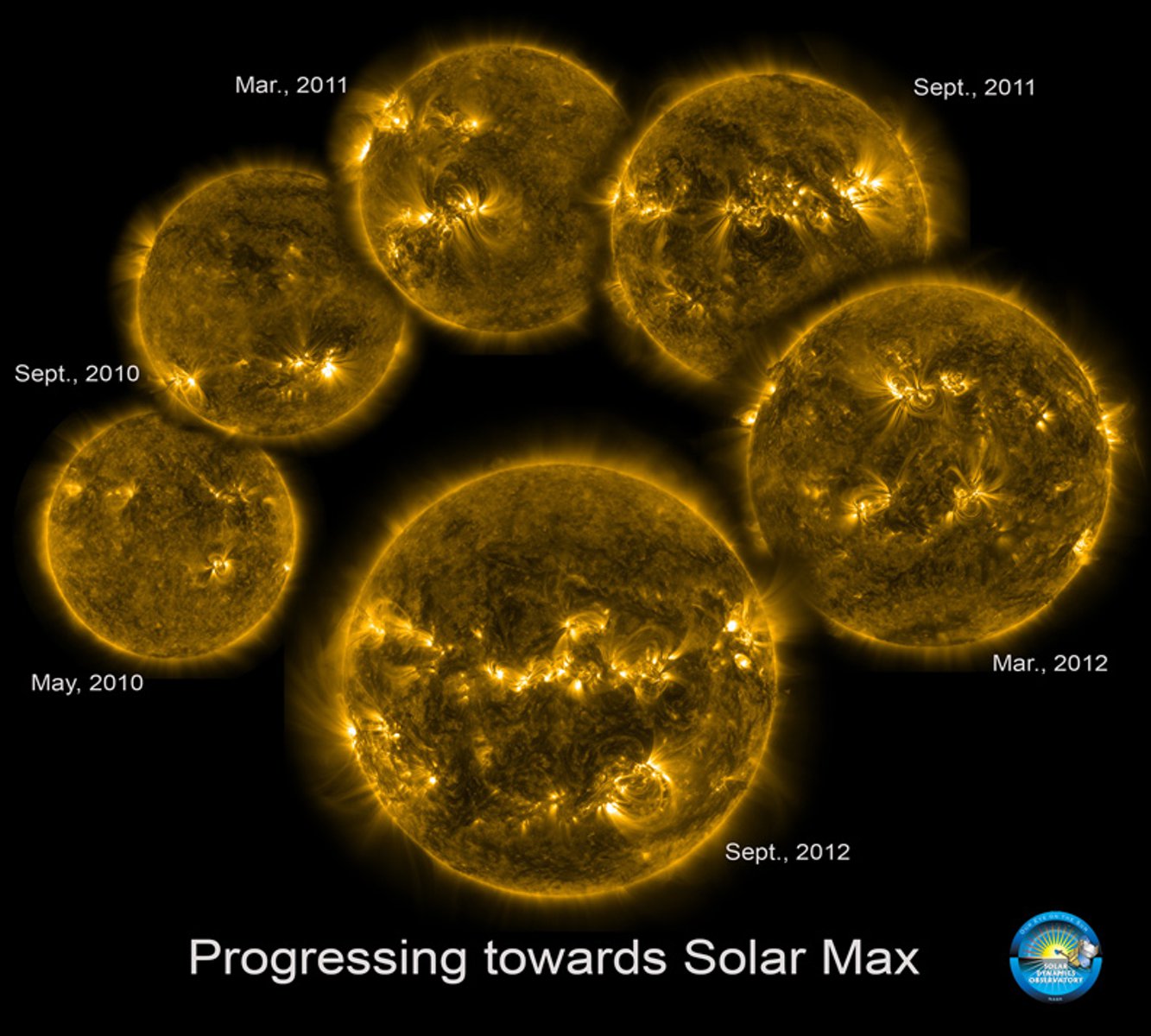
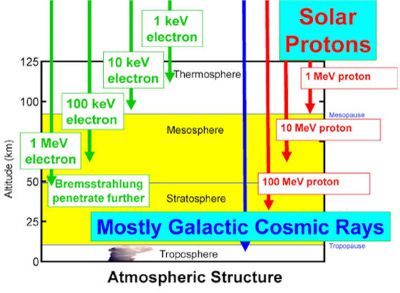
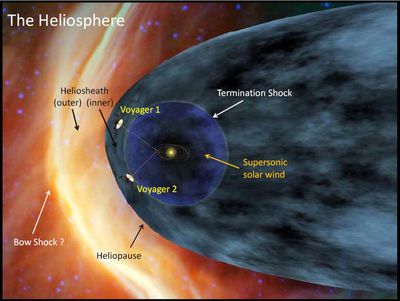
 The Effects of Solar Variability on Earth’s Climate
The Effects of Solar Variability on Earth’s Climate

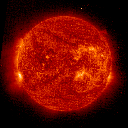
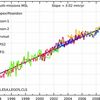

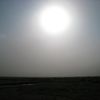
Athugasemdir
Ég man vel eftir ósónlyktinni í ljósastofunni í Austurbæjarskólanum í gamla daga og hef vitað síðan þá að útfjólublátt ljós breytir súrefni andrúmsloftsins í ósón. Meiri útfjólublá geislun ætti samkvæmt því að auka ósónmyndun efst í gufuhvolfinu, ekki draga úr henni. Annars, eins og bent hefur verið á, hitar sólin jörðina úr alkuli um meira en 270 gráður alla daga ársins. Sérhver minnsta breyting á geislun hennar hlýtur því að hafa gífurleg áhrif á svo flókið og viðkvæmt kerfi, sem gufuhvolfið er.
Vilhjálmur Eyþórsson, 9.1.2013 kl. 16:54
Ég man líka eftir ósonlyktinni í Austurbæjarskóla. Þessi ferska lykt tengist líka þvottasnúrum í minningunni :-)
"For instance, Charles Jackman of the Goddard Space Flight Center described how nitrogen oxides (NOx) created by solar energetic particles and cosmic rays in the stratosphere could reduce ozone levels by a few percent. Because ozone absorbs UV radiation, less ozone means that more UV rays from the sun would reach Earth's surface.
Þarna vinnur NOx sem milliliður sem myndaður er af "solar energetic particles and cosmic rays" en NOx minnkar ósonmagnið í háloftunum, sem aftur þýðir að meira af útfjólubláum geislum nær til jarðar. Þetta er eitt dæmi um krókaleiðir sem minnst er á í skýrslunni, en þannig krókaleiðir og krákustígar geta skýrt ýmislegt.
Ágúst H Bjarnason, 9.1.2013 kl. 17:13
Samkvæmt fréttinni sem þú vísar í, þá er hér aðallega um staðbundin áhrif að ræða og þá helst hvað varðar regn (feitletranir mínar):
Höskuldur Búi Jónsson, 9.1.2013 kl. 17:24
Takk fyrir innlitið Höskuldur Búi.
Það sem mér þykir ánægjulegast við þetta framtak er að þarna er smalað saman fjölmörgum fræðimönnum sem hittast á vinnufundi sem þeir kalla workshop og stóð yfir í aðeins tvo heila daga. Þarna skiptust menn á skoðunum og þarna fræddist hver af öðrum. Þetta er mjög þverfaglegur hópur og ekki var stefnt að neinni samdóma niðurstöðu. Í skýrslunni stendur framarlega:
"This workshop report contains no recommendations,
findings, or statements of consensus.
Instead, this workshop report summarizes the
views expressed by individual workshop participants
(invited speakers and guests). Also included
is background information intended to provide context to the
reader on both the solar and climate science
topics presented at the workshop; however, this is not
intended to be an exhaustive review of the
current state of the science..."
Vonandi halda menn áfram á sömu braut. Fari sólvirknin áfram minnkandi munu menn örugglega reyna að fylgjast með áhrifum á jörðu niðri, og þá ekki bara hitastigi heldur úrkomu, skýjafari, vindafari, o.þ.h., og svo auðvitað breytingu á útgeislun sólar, segulsviði og agnastreymi utan út geimnum... Áhugaverðir tímar eru kannski framundan.
Ágúst H Bjarnason, 9.1.2013 kl. 18:10
"When Earth's radiative balance is altered, as in the case of a chance in solar cycle forcing, not all locations are affected equally. The equatorial central Pacific is generally cooler, the runoff from rivers in Peru is reduced, and drier conditions affect the western USA."
Mér finnst þessi lýsing minna á La Nina, þ.e. kalda fasann á ENSO-sveiflunni í Kyrrahafinu sem einmitt hefur kælandi áhrif á jörðina í heild vegna aukins uppstreymis kaldsjávar útfrá ströndum Ameríku við miðbaug. Þannig má kannski tengja sólvirkni við ENSO-sveifluna (El Ninjo / La Nina) og fá út óbein áhrif sólarinnar á hnattrænar hitasveiflur.Emil Hannes Valgeirsson, 9.1.2013 kl. 20:59
Þakka þér fyrir þetta Ágúst þetta er mjög athyglisvert. Þú ert greinilega alltaf á undan mér í veðurfræðinni.
Jón Magnússon, 9.1.2013 kl. 23:52
Síða Ágústar á moggablogginu er besti fjölmiðillinn sem ég les um loftslagsmál. Takk fyrir þetta Ágúst.
Kristinn Pétursson, 10.1.2013 kl. 00:31
Bæta við athugasemd [Innskráning]
Ekki er lengur hægt að skrifa athugasemdir við færsluna, þar sem tímamörk á athugasemdir eru liðin.